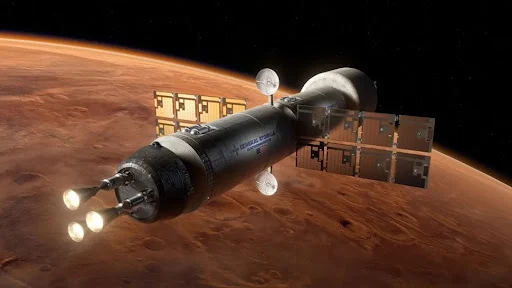NASA and General Atomics are making significant strides in nuclear thermal propulsion (NTP) technology, which could revolutionize deep-space travel. Here's a summary of recent developments:
Fuel Testing:
- General Atomics successfully tested a new NTP reactor fuel at NASA's Marshall Space Flight Center in Alabama.
- The fuel endured extreme conditions, including high temperatures and thermal cycling with hot hydrogen, proving its viability for space missions.
- These tests are crucial for developing safe and reliable NTP systems for future lunar and Mars missions.
NTP Technology:
- NTP rockets use a nuclear reactor to heat a propellant, like hydrogen, to create thrust, offering higher efficiency than traditional chemical rockets.
- This technology could significantly reduce travel times for deep-space missions, minimizing risks to astronauts and the need for extensive life-support systems.
Collaboration and Future Plans:
- NASA and the Defense Advanced Research Projects Agency (DARPA) are collaborating to develop a nuclear thermal rocket engine, with a demonstration planned for 2027.
- These efforts aim to integrate NTP technology into upcoming lunar and interplanetary missions, paving the way for more efficient and faster human spaceflight beyond Earth.
Potential Benefits:
- Faster transit times for astronauts, reducing exposure to cosmic radiation and other risks.
- Increased efficiency, requiring less propellant and making deep-space missions more feasible.
- Potential for more ambitious exploration missions, including crewed journeys to Mars.
Overall, the successful testing of nuclear fuel by NASA and General Atomics marks a significant step towards realizing the potential of nuclear thermal propulsion for deep-space exploration.
